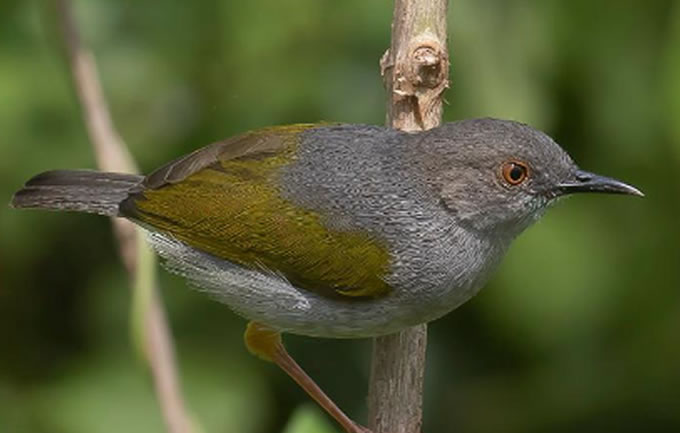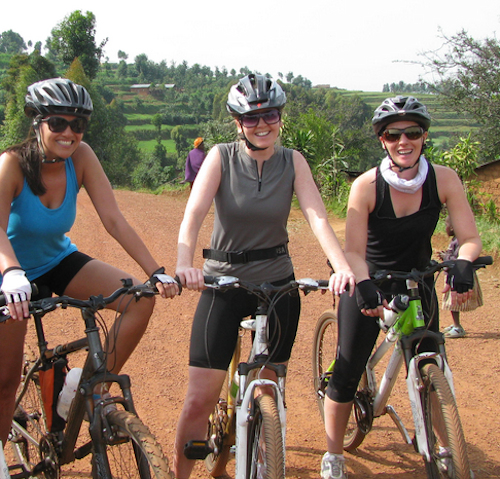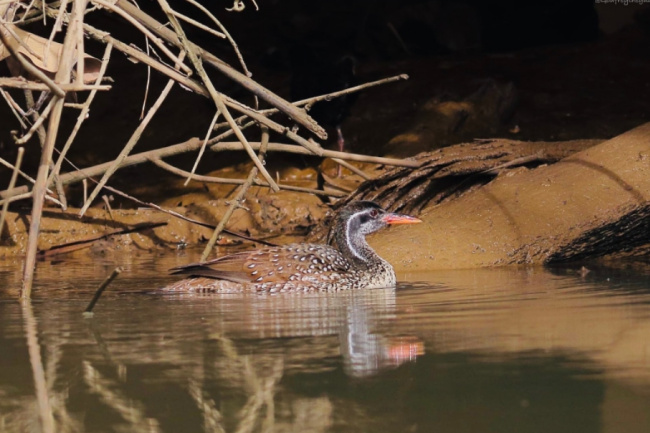This birding safari is meant for birders who would like to have it relaxed. It is very recommendable even to birding couples on their honeymoon. Please come enjoy with us as Interior safaris East Africa Birding safari experts take you to these great destinations. Birding in Uganda can happen almost everywhere as long as you step on its soils.
At the end of this birding safari in Uganda, given your commitment, luck and perseverance, we expect to collect over three hundred and fifty (350) bird species.
Trip Summary
Day 1: Birding in Entebbe and the environs.
Day 2: Bird watching Mabira Central Forest Reserve
Day 3: Birding to Mabamba Swamp
Day 4: Birding In Uganda Safari. Lake Mburo- western Uganda
Day 5: Birding to Queen Elizabeth National Park
Day 6: Birding Immaramagambo forest
Day 7: Birding Queen Elizabeth National Park then transfer to Kibale Forest
Day 8: Birding Kibale Forest
Day 9: Birding as we transfer to Kampala
easy birding safari in Uganda begins from the Uganda Wildlife Education Centre which originally started as an animal orphanage

Day 1: Birding in Entebbe and the environs
Our easy birding safari in Uganda begins from the Uganda Wildlife Education Centre which originally started as an animal orphanage in the 1920s but gradually grew to be a show place of various flora and fauna in Uganda. Birds to look out for here include Grey Crowned Crane, African Grey an d Meyer’s Parrot, Pink-backed Pelican, Ostrich, Crowned crane, Slender-billed, Village, Northern-brown Throated, Black Headed, Orange, Baglafecht, Black-necked and Vieillot’s Black Weavers like the, the northern masked weaver, the habituated Shoebill Stork that will clatter for you, African Fish Eagle, small Banded-snake Eagle, African Goshawk and the Swamp Flycatcher among other bird species. Lunch break and then later birding to to the botanical gardens where you will most likely be able to enjoy more prolific bird life in Uganda.
A Whyte the first curator of Uganda’s Museum started these gardens as a natural forest for use as research grounds for the introduction of various ornamental plants and exotic fruits to Uganda. Birds to look out for here on a birding safari to Uganda include the Pale-throated Leaf-love, the great Blue Turaco, Ross’s Turaco, the Black-and-white Casqued Hornbill, the Pied and Crowned Hornbill. Yellow-backed Weaver, Orange Weaver, Northern-brown Throated Weaver, Great-reed Warbler, Sedge and Grey-capped Warbler and the fish eagle. Dinner and overnight at Papyrus Guest House or Equivalent.
Day 2: Uganda Bird watching safari to Mabira Central Forest Reserve
Birding to Mabira forest reserve which is the largest block of moist semi deciduous forest remaining near Kampala in Uganda ranks among the best as the forest is the only haven to the species near the cities of Kampala and Jinja which have been highly settled by people and industrialized.
On our birding safari today we look out for the Cassin’s Hawk Eagle, the Nahan’s Francolin has been recorded in the forest, Yellow Spotted, Grey Throated, Hairy Breasted and Yellow Billed Barbet, Brown-eared, Buff-spotted and Yellow Crested Woodpecker, Purple-throated Cuckoo-shrike, Yellow-rumped, Yellow-throated and Speckled Tinkerbird, Grey and Yellow Longbill, Olive-green Cameroptera, Red-capped, Blue Shouldered and Snowy-crowned Robin-chat, the ground dwelling and shy dark brown Brown-chested Alethe and its counterpart the Fire-Crested Alethe, Chestnut and Jameson’s Wattle-eye, the very small distinctive Penduline Tit related Tit-Hylia, Little-green, the beautiful greenish yellow banded Weyns’s Weaver, Yellow Mantled Weaver, Green-throated, Green, Orange Tufted and Superb Sunbird, Narina Trogon, the white less winged Forest Wood-hoopoe, Blue-throated Roller, the large tailed almost with no spine Cassine’s Spinetail, Sabine’s and Mottled Spinel all occur here, Black Bellied Seed-cracker and the Blue-headed Blue-bill, Dwarf, Blue Breasted and Shining-blue Kingfisher in habit the pond areas with in Mabira Forest .
Return to Papyrus Guest House for dinner and overnight stay.
Day 3: Birding safari to Mabamba Swamp and transfer to Lake Mburo National Park
After an early breakfast drive to Mabamba Swamps. Mabamba is an extensive marsh in Uganda stretching through a long narrow bay, fringed with papyrus towards the main body of Lake Victoria and is about 50 km west of Kampala.
Most of the birding is done by canoe. While bird watching here we look out for species like the rare Shoebill Stork, pairs and small group of the Blue Breasted Bee-eater, White-faced Whistling Duck, African Water Rail, Goliath, Rufous Bellied and Purple Herons, Spur-winged and Pygmy Goose, African and Lesser Jacana, Long-toed Lapwing, Fan-tailed Widow-bird, Fawn-breasted Waxbill, Carruther’s and Winding Cisticola among the birds of Mabamba then we continue to Lake Mburo National Park with a brief stop at the Equator and other birding spots which are mostly a secret to Journeys Uganda Safari guides’ here look out for the Blue-headed Coucal, Lilac Breasted Roller, Saddle-billed Stork, Rufous-bellied Heron, Glossy Ibis, Three-banded Plover, Common, Marsh, Wood and Green Sandpiper. As we get into Lake Mburo National Park, note that it encompasses not only Lake Mburo but also four other small lakes. Birding to the park begins as you turn off to Nshara gate with great welcomes from the acacia whispers and the bird species that flirt with them.
Look out for the Coqui Francolin, the Intra African migrating Brown-chested Plover, the northern Tanzania and rare in Southern Uganda Red-faced Barbet and Crested in the rainy months look out for the Rufous-bellied Heron, Green-capped Eremomela, Tabora Cisticola, the Malachite, Giant, Striped, Woodland and Pied Kingfishers. Dinner & overnight at Rwakobo Rock for two nights.
Day 4: Birding In Uganda Safari. Lake Mburo- western Uganda
After an early breakfast, embark on a foot safari (Nature Walk). While on the walk look out for the Red faced Barbet, Bare faced go away bird, Verreaux’s Eagle Owl, Pearl Spotted Owlet, Yellow Bellied Apalis, Green Backed, Nubian and Uganda Spotted Woodpecker, Brown Chested and African Wattled Plover, Yellow billed ox pecker, Pale and lead coloured flycatcher. After lunch Proceed with a late afternoon game drive along the Zebra track. The African Wattled Plover, Black-bellied Bustard, and Temmincks Courser may be sighted.
In the afternoon drive to the lakeside for a boat ride which may yield sightings of the African Finfoot before it disappears into papyrus floating on the lake the very shy White-backed Night-heron. Other birds to look out for are the Little Grebe, Greater and Lesser Swamp Warbler; White-winged Warbler, Red-headed Lovebird, in the evening on our back to the lodge we look out for Pennant-winged, Black-shouldered, Freckled and Square-tailed Nightjar, The Verreaux’s Eagle-owl is a big chance this night also look out for other animal species such as Burchell’s Zebra, Eland, Impala and the Comical cute looking Warthogs and the night show Leopards and Hyenas. Dinner and overnight stay at Rwakobo Rock.
Day 5: Birding to Queen Elizabeth National Park
This morning our birding safari takes us to Queen Elizabeth, the second largest National Park in Uganda with over 600 recorded bird species, a few being Palearctic and intra African migrants and the largest number being resident and breeding species. This park boasts of over 610 bird species recorded so far, thus making the park a birding paradise mostly for listers.
It is one of the richest parks in Africa and supports an astounding density of flora and fauna we hope to reach Marafiki Safari Lodge in time for Lunch then embark on an afternoon launch cruise along the 40 km natural Kazinga channel joining the two lakes Edward to the south and George to the north. This waterway is a birding safari haven, this is both a mammal and birding highlight in Africa with the biggest concentration of schools of Hippos and many migratory species of Birds. Birds to look out for include the Greater painted Snipe, African Fish Eagle, Grey Plover was recorded here 6 years back, Pallid Harrier, Gull billed Tern, Lesser-black Backed Gull, African Skimmer, African Spoonbill, Kittlitz’s, Three-banded, Common Ringed, Little Ringed, Lesser Sandplover the list is endless. Dinner and overnight stay at Marafiki Safari Lodge.
Day 6: Birding Immaramagambo Forest
After an early breakfast drive to Maramagambo for a walking safari through the forest. Bird species to look out for here include the Bat Hawks, Brown-eared Woodpecker, Fawn-breasted Waxbill, Sulphur breasted Bush-shrike on the out skirts of the forest, Blue- breasted and Shining-blue Kingfisher, as you drive to the forest, be keen on finding the Dark-capped Yellow Warbler, Brown-backed Scrub-robin, Marsh Tchagra, Black Coucal, the African Crake always crosses the road back and forth the visiting Eurasian Golden Oriole. On a good day the Black and-white colobus monkeys may also be spotted. Dinner and overnight stay at Marafiki Safari Lodge.
Day 7: Birding Queen Elizabeth National Park then transfer to Kibale Forest
Rise early before the sun and embark on an early morning game drive to catch up with early risers. The drive takes you through the Kasenyi plains composed of Janet, Bernard, Kaguta and other game tracks up to the Bunyampaka salt mining area found on the immediate edge of Queen Elizabeth National Park. The drive will enable you sight various bird species like the Great White Pelican, Lesser Flamingo, Martial Eagle, Rupell’s Griffon, White-backed, Lappet-faced, and White-headed Vulture, many Ploceus including the Lesser-masked, Village, Black Headed, Spectacled and Holub’s Golden Weaver. After the drive, transfer to Kibale Forest National Park.
This park occupies undulating terrain on the main Uganda Plateau slightly tilted to the south and is drained by the Dura and Mpanga rivers that flow in a southerly direction into Lake George. Kibale Forest National park has the highest concentration of primates which Uganda and Africa at large has to offer most important are the Chimpanzees as well as the rare and least monkey to be researched about – L’hoest’s, the Red Colobus, Grey-cheecked Mangabey, Black-and-white Colobus monkey among others not leaving out the nocturnal Potto primates that dwell in the forest. Over 325 bird species have been recorded in this park among which the special ones include the African broadbill, Green Breasted Pitta, White-naped and Afep Pigeon

Day 8: Birding Kibale Forest and chimpanzee tracking
After an early breakfast, go out into the forest with a major focus on searching for the hard to find Green-breasted Pitta, much as it is the focus, expect to hear and see the Western Nicator together with some great flocks and special bird species including the Afep and the globally threatened White-naped Pigeon, White-headed Wood-hoopoe, Red-headed Malimbe, Red-chested Owlet, Black-headed Paradise Flycatcher, Superb, Blue-throated Brown, Green-throated, Green, Grey and Green-headed Sunbirds, African Shrike-flycatcher, and Chestnut Wattle-eye. Greenbuls are well represented and includes the, White, Throated, Slender-billed and the scarce Toro Olive among the more widespread forest species in East Africa.
The noisy and whacking Dusky Long-tailed Cuckoo African Grey Parrots frequently feed in roadside figs, the loral spotless Willcock’s honey guide, Joyful Greenbul, Black Bee-eater, Green Twinspot, Black-bellied Seed Cracker, Bi-coloured Mannikin, Yellow-rumped, Yellow-throated and Speckled Tinkerbird among others. Butterflies, Olive Baboons, Mangabey, bush pig and the giant forest hog may also be spotted.
Day 9: Birding as we transfer to Entebbe onwards
We will start after a morning breakfast and drive through the Kibale Forest National Parky with birding stopovers en route to look out for special species like the Highland Rush Warbler, Blue-headed Coucal, Marsh Tchagra, Nothern-brown Throated Weaver in the swamps around the Fortportal hospital then proceed for another birding stop at Sebitoli about 12 km out of Fortportal town looking out for Joyful Greenbul, African Emerald, Dusky and Olive Long-tailed Cuckoo, Many-coloured and Lagden’s Bush-shrikes, Valvet Mantled Drongo, Masked Apalis, Narrow-tailed, Purple-headed Glossy, Splendid and Stuhlmann’s Starling, Many Coloured Bush-shrike, Black-faced Rufous Warbler, Afep Pigeon, Tiny Sunbird, Sabine’s and Cassine’s Spinetail should be watched out for in the blue skies, Green Throated, Olive Bellied and Green Sunbird, Grey-throated, Yellow-billed and Yellow-spotted Barbet, Forest and Yellow-mantled Weaver, Yellow-crowned Woodpecker, Cassin’s Hawk Eagle, Northern and Pink-footed Puffback, Black-billed Turaco, White-collared Oliveback, Black Bee-eater, birding around the bridge at times produces views of the African Black Duck, Mountain Wagtail and the Cassine’s Grey Flycatcher and other bird species which might be grabbed en route.
We later get to Entebbe for a day room and an early dinner as we await your flight back home.
At Interior safaris East Africa, it’s indeed a Pulse of wonder?




